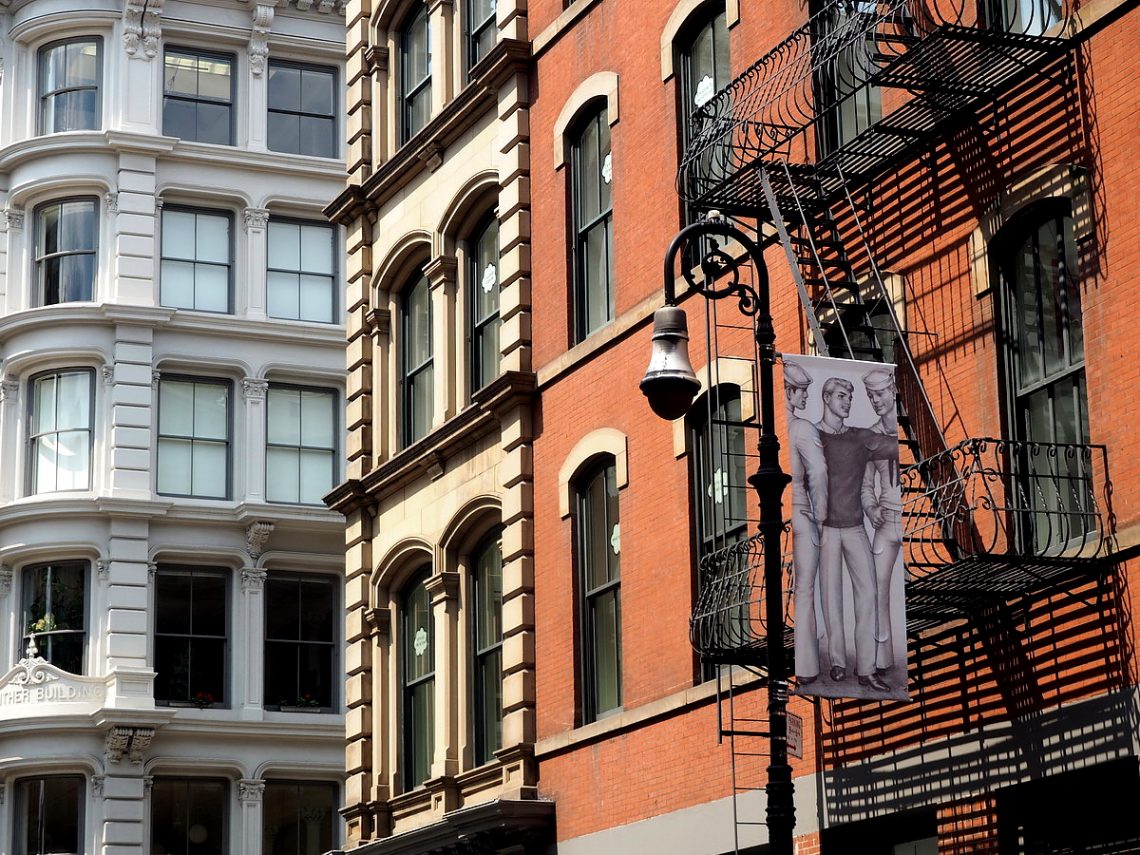Lower East Side
(South of Houston Street and east of Bowery)
If you live in New York, even if you’re Catholic, you’re Jewish.
(Lenny Bruce)
This quiet district with a slightly ghost town feel welcomed several hundred thousand Jews from Eastern Europe in the twenty years before the first world war who arrived in hope of a freer, more enriching life. Nowadays the immigrants are mainly from Asia or Hispanic countries, but the Lower East Side is still predominantly a Jewish neighbourhood. Here you can find the most beautiful synagogues and the best kosher restaurants. Unfortunately lots of synagogues are pretty run down. One of the neighbourhood’s pride, the Beth Hemedash Hagadol Synagogue (60 Norfolk Street), was badly damaged first during a storm in 1997, then a large part of the building was burned down in a fire in 2001. It’s currently closed and the congregation is fighting for donations to restore the building.
 On the other hand, the synagogues Elridge Street were restored beautifully – they are definitely worth a visit.
On the other hand, the synagogues Elridge Street were restored beautifully – they are definitely worth a visit.
In the Tenement Museum there are excellent guided exhibitions about the lives of immigrants. This is a period building where immigrant families lived for decades. The different tours focus on a theme and guide around one level of the building (so if you pay for one tour you’ll see only one part of the building but in lots of detail). I was on the Hard Times tour which showed the story of two families and the life in the building within the timeframe of 1863-1935. Through the life of the German Jewish Gumpertz family and the Italian Catholic Baldizzi family, we could get a glimpse into the everyday lives of immigrants, the Great Depression, the life of the city. This era is best shown in Jacob A. Riis’s photographs, it’s worth looking them up on the Internet or in the library.
Although the neighbourhood’s Jewish vibe has mostly disappeared, there are a few surviving culinary institutions. One of them is Russ and Daughters (179 East Houston Street, between Allen and Orchard) which started as a family business with a hand cart in 1900. It opened its shop in its current location in 1914. The smoked fish and its caviar offerings are very popular.

It celebrated its 100th anniversary by opening a small restaurant nearby at 127 Orchard Street. Their “Super heebster bagel toast” is heavenly (the toppings are: whitefish and baked salmon salad, wasabi-infused fish roe, horseradish, dill cream cheese).
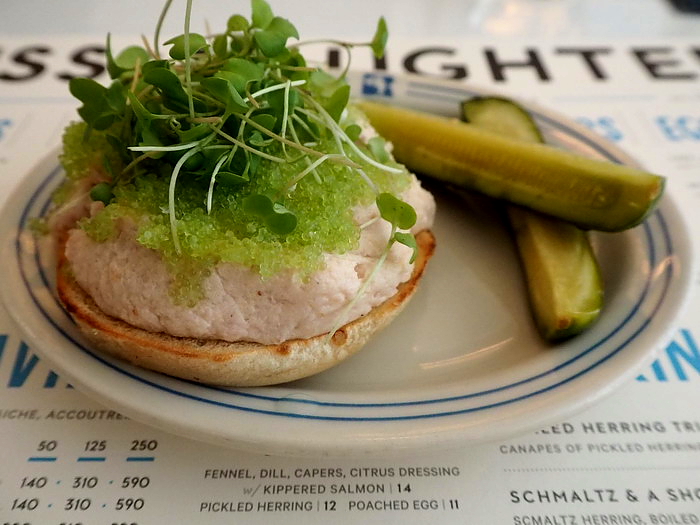
On the corner of Houston and Ludlow stands one of the most well-known and popular restaurants in New York, Katz’s Delicatessen (205 East Houston, on the corner of Ludlow) which is also past its 100th anniversary. Hundreds of locals and tourists make a pilgrimage here every day for a hearty pastrami sandwich. The famous orgasmic scene from Harry and Sally was also played here at one of the tables. Two decades ago I loved eating here but now the portions seem smaller and the food less tasty.
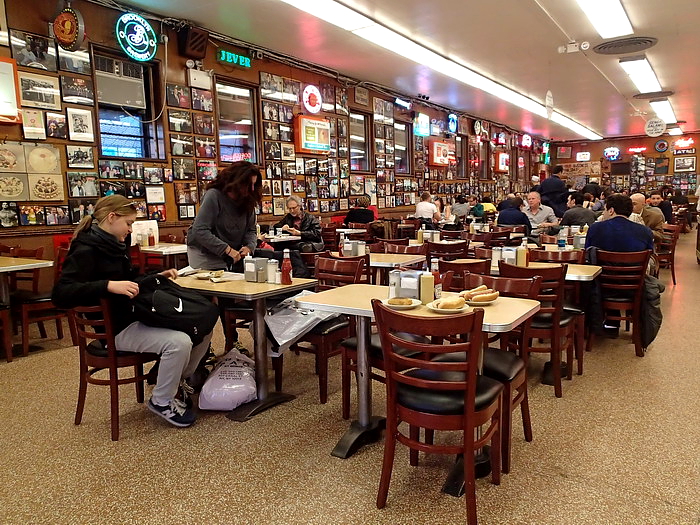
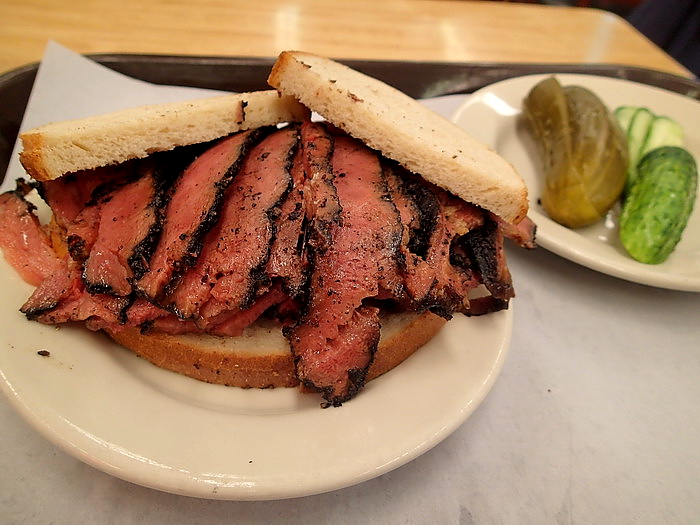
Another classic is Yonah Shimmel’s Knish Bakery (137 East Houston Street, between 1st and 2nd Avenue) where they sell the knish at the same location since 1890. According to the legend their most famous customer is Woody Allen to whom they deliver a dozen potato/pasta balls every day. The shop is memorialized in a New York Times article.
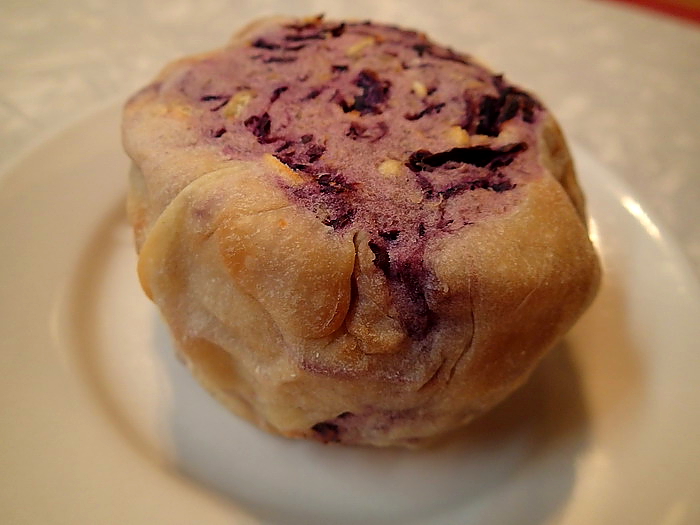
As we are talking about gastronomy: at the beginning of the 1900s, Essex Street was the centre of shops selling pickled things. Unfortunately the old shops are now closed but there is The Pickle Guys (49 Essex Street) who work based on the traditional recipes. They don’t use any preservatives, and strictly adhere to kosher rules, storing the pickled food items in barrels full of salted water, garlic and spices where they keep for months.
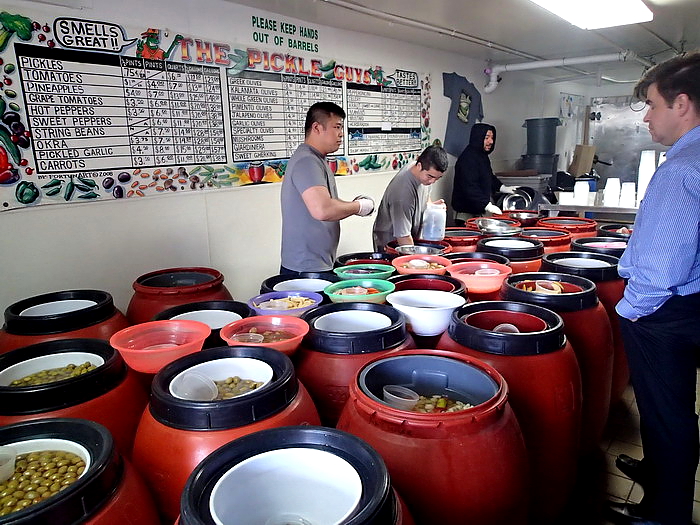
Another famous store is the Economy Kandy (108 Rivington Street), which has been selling hundreds of types of candy and sweets since 1937.
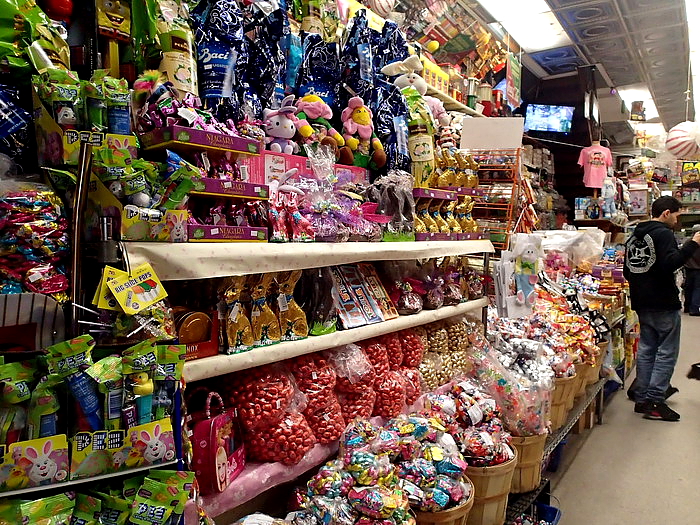
The favourite of ice-cream lovers is Il Laboratorio del Gelato (188 Ludlow Street, corner of East Houston) where you can buy ice-cream in various special flavours, from beetroot to ginger.
The neighbourhood also boasts a new museum which opened in 2007. This is the New Museum of Contemporary Art at 235 Bowery built like rectangular boxes stacked on top of each other. There are very exciting contemporary exhibitions and the roof terrace is open on weekends.
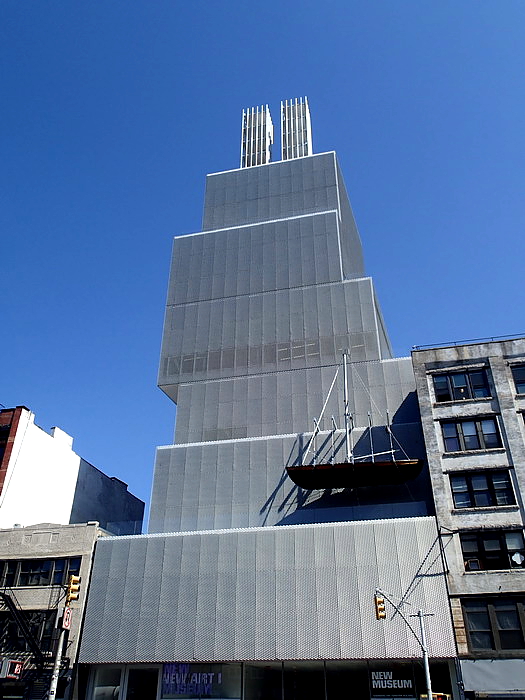
When I was there, one level was redesigned as an open art workshop where the visitors could grab a brush and start painting. The museum provided paint, brushes and even smocks but unfortunately it was a temporary “exhibition” but I’m sure the next ones will be very interesting as well.
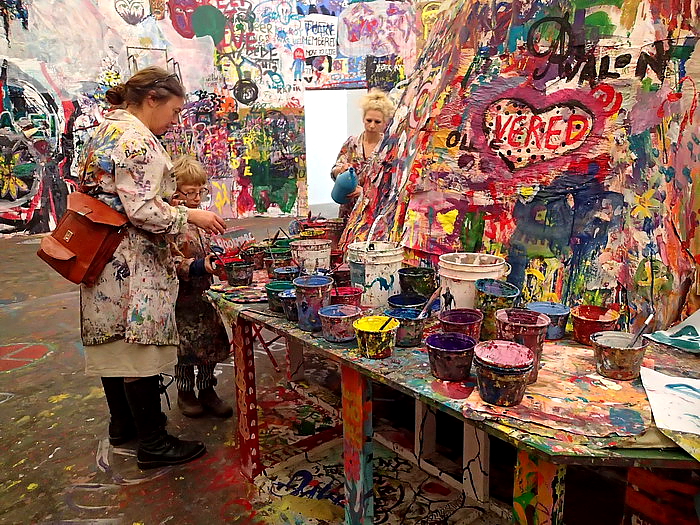
A less known but unique little museum of Lower East Side is the Space Womb, which earlier functioned as Fusion Arts Museum (57 Stanton Street). Can’t be mistaken after seeing the strange metal sculptures by its entrance.
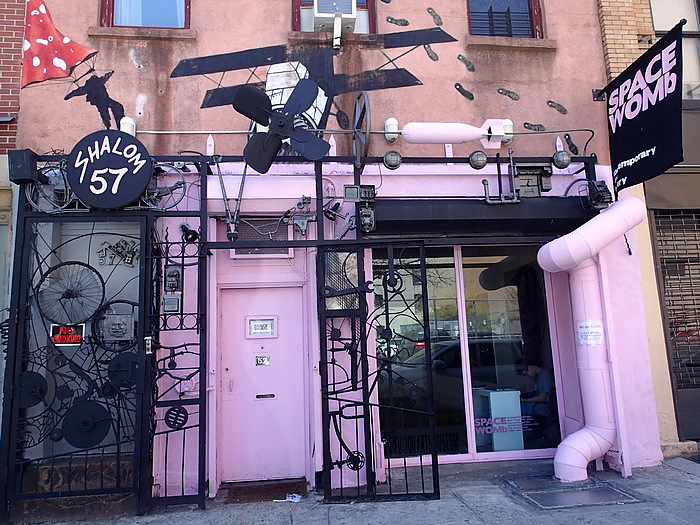
The best is to walk around here on a Sunday morning when the area is the liveliest, especially around the Orchard Street market. However, the market at 120 Essex Street is open only from Monday to Saturday. This hall with several dozen stores was opened in 1938 in order to get the then popular hand carts out of the way of traffic. The Chinese are pushing into Lower East Side as well, some streets are now totally taken over. A special example of different nations living together and the mixing of cultures was the Bernstein’s on Essex Street which through three decades until the early 90s was the only kosher Chinese restaurant (there is a meat shop in its place now).
SOHO – South of Houston
(between Canal and Houston / Broadway and Sullivan Street)
This is the art district of the city with numerous little galleries and shops within a few blocks. Before we start exploring, it’s worth checking out the buildings from the outside. The local architecture, the American industrial style, is most known from its cast iron facades.
The iron was introduced for practical reasons since it was faster and cheaper to erect iron structures than heavy walls. The architects were inspired by the iron to create beautiful decorations that would have been hard to make from stone. Strangely the iron decorations that started for practical reasons were copied in stone after the cast iron building style went out of fashion – nowadays we can only tell the difference between the two by using magnets. The prettiest houses are on Green Street where two stand out: numbers 72-76 and 28-30.
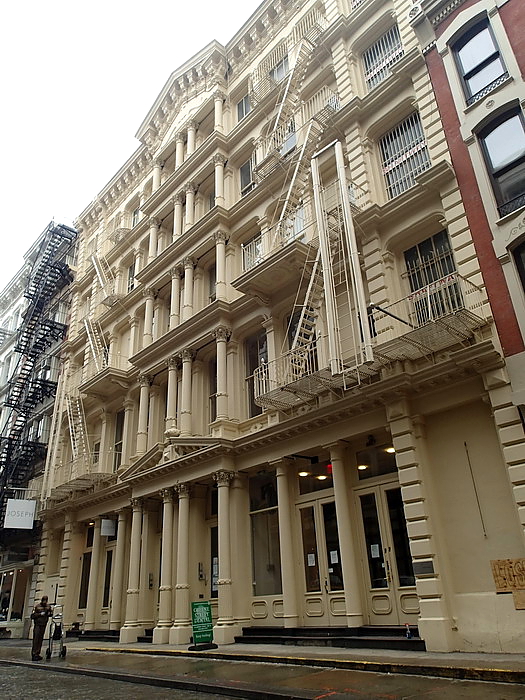
The strong iron structures made massive walls redundant, and they could design huge windows and large, airy rooms. Originally factories moved into the buildings but about four decades ago artists took over. The very bright rooms proved to be excellent for studios and galleries. If we feel like shopping, it’s worth strolling around Broadway. But let’s not leave out the used clothes stores where we can spot clothes from our teenage years.
In SOHO there might be the largest number of art shops per street in the world. An especially good time to visit is Friday evenings when the exhibition openings are happening. Then beside the art experience we can sip some free red wine. The galleries are all free (generally closed Sundays and Mondays) and offer a fantastic array of art pieces. Even in the most hidden one-room tiny galleries you can sometimes encounter world famous names. In most places you can ask for a price list at the reception and it’s a good idea to get one even if you don’t plan to spend a couple of thousand dollars on a painting consisting of two lines because the names of the artists are given there (there are only numbers by the paintings or photos). In the summer it’s great to cool down in these large, bright, air-conditioned rooms.
One of the world’s weirder exhibitions is the New York Earth Room a világ legpihentagyúbb kiállítása (141 Wooster Street, between Prince and Houston Streets). Walter De Maria’s “artwork” is a room full of earth where there is nothing beside the soil. In 1997 they put 197 cubic metres of soil into the 335 sqm room with 56cm height. The resulting weight is 127.300 kg. We can examine the soil in vain, it’s truly empty; there is not a single weed growing on it. This is the third such exhibition, before this one they filled rooms with earth in Munich and Darmstadt but those are gone now. I find it unbelievable and amazing, and showing unconditional respect to the arts that such artwork (that brings no income since it’s free to visit) can stay for decades in New York where the real estate prices are sky-high.

If after looking at this room you would become a fan of Walter De Maria, don’t worry, there is another artwork of his nearby. At 393 Broadway is the Broken Kilometre, a “thing” made out of 500 pieces of polished brass pipes.
SOHO’s most famous culinary institution is the Dominique Ansel Bakery (189 Spring Street, between Thomson and Sullivan Streets) where the cronut craze started (hybrid of a croissant and a doughnut). Not long ago the same baker also created the chocolate cookie milk shot, a chocolate cookie shaped as a shot glass in which they pour cold milk. It’s not easy to eat it without getting all messy but I really liked it. While the cronut guarantees queues in the morning, this is baked in the afternoon so now there are crowds then, too. Smart.
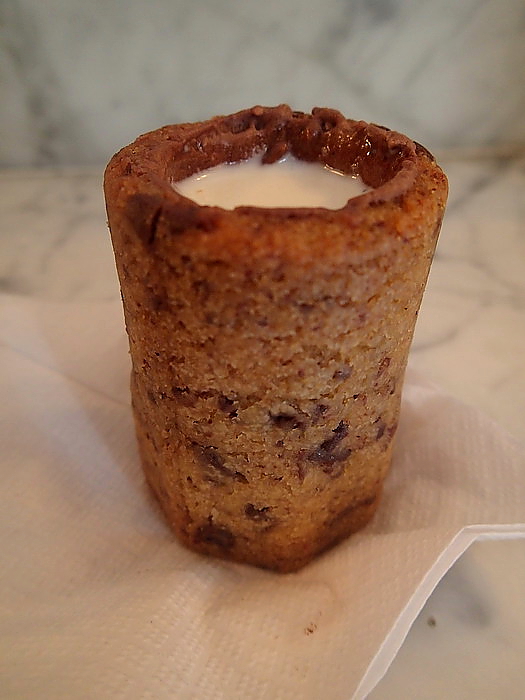
There is fantastic ramen (substantial Japanese soup) at Ippudo (65 4th Avenue, near 10th Street). This is the New York location of the Japanese ramen chain, as authentic as can be.
Lombardi’s Pizza, which opened in 1905, is – according to some – the country’s first pizzeria and is on the corner of Spring Street and Mott Street. The specialty of the place is that they don’t sell pizza by the slice, only whole ones to order.
One of the restaurants very popular among students is the Dojo, 14 W. 4th Street (between Broadway and Mercer Street). Tasty dishes, large portions, friendly prices.
The Chinese market has the atmosphere of Chinatown but geographically belongs to SOHO: both sides of Mott Street, between Hester St. and Grand St. What you cannot buy here doesn’t exist.
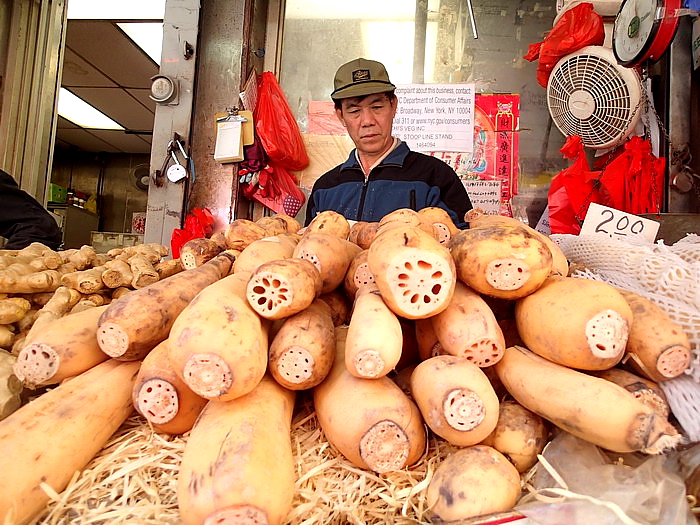
GREENWICH VILLAGE
(Between 14th Street and Houston Street, west of Broadway)
The once-upon-a-time bohemian neighbourhood. Here even the streets are not designed with rulers in hand, but start twisting around. There are no Skyscrapers and large office buildings in the Village; cafes, galleries and boutiques dominate. We don’t see businessmen in suits on the streets, rather students on roller skates, young painters, big tattooed guys and people who enjoy life. Couple of decades ago, low rents attracted the arty types but now only the well-off can afford the airy apartments. The young with less money started to move towards East Village but now the prices there are fast rising too. In both areas it’s a pleasure to check out what people are wearing but most eccentric is the Halloween Parade where the locals march in phenomenal costumes. If you are lucky to be vacationing in New York on the 30th of October, don’t miss the parade – the costumes cover everything from a yellow taxi to a giant condom. New York is alive all night but especially here. The streets are as busy at dawn at 4 am as Wall Street on a Monday morning.
Washington Square Park is the centre of the Village and its extreme inhabitants, and is very lively especially on weekends. It’s too big to be a square and too small to be a park, maybe that’s why the double name. There are all kinds of entertainers in the middle of the square, regulars are playing never-ending chess battles in the south-west corner and all around the park, groups of varying sizes are roller skating, singing or maybe training dogs. Frisbees and skateboards are flying, music is blaring from boom boxes on the shoulders of heavyset black guys – there is not another square in the city that’s more full of life.
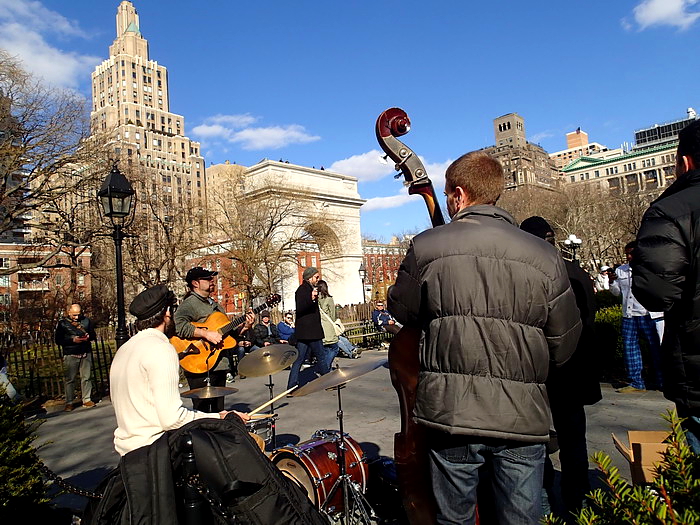
There was a public cemetery here in the 1700s, so when they created the square, several thousand skeletons were exhumed. Until 1819 public hangings also took place here (the hanging pole can still be seen in the northwest corner of the square) and it was also a popular location for duels. The triumphal arch replaced an old wooden construction in 1892 and was erected to commemorate the centenary of George Washington’s inauguration. At the end of the 70s and early 80s the park was a main spot for drug users but in the mid 80s a strong campaign cleared them out. Although today you can still sometime smell the typical sour-sweet odour and see cigarettes discreetly passed around.
The park is popular place for various events and festivals – once I happened by on the day of a pillow fight.
The Washington Memorial Arch is at the north end of the park, erected originally in 1889 for the centenary of the president’s inauguration. On the south side, the library of the New York University (NYU) dominates. The NYU is the country’s largest private university and expanding fast in the area, most buildings are already sporting its purple flag. When crossing the memorial arch and starting on 5th Avenue we’ll see a row of houses called Washington Mews at the first corner on the right hand side in a small cobble stoned street. The small stone houses used to be stables and are now flats for NYU teachers.
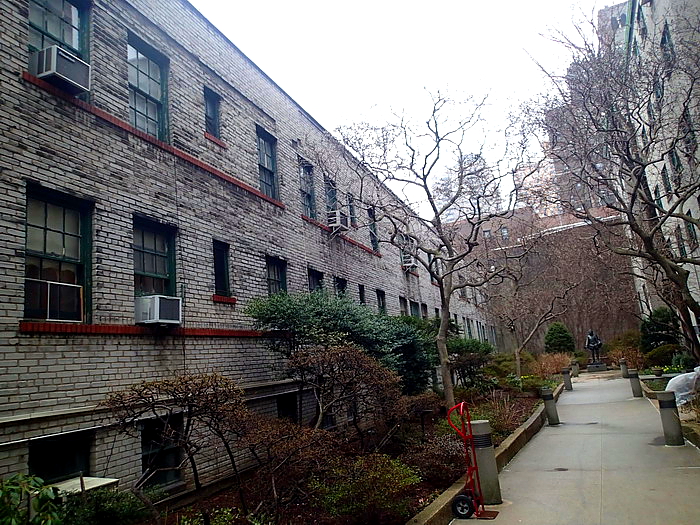
A small detour to the north takes us to Strand Book Store, the legendary bookstore operating here since 1927 with its 18 miles of bookshelves.

MacDougal Street is a coffee shop heaven where almost every second building is a café. In the 50s Jack Kerouac and Allen Ginsberg used to recite their poems in these small smoky cafes whenever they weren’t jumping on freight trains somewhere else in the country. Their regular haunt was the now closed San Remo Café on the corner of MacDougal and Bleecker (93 MacDougal Street) and the Five Spot Café at 5 Cooper Square which now has been refurbished under a different name. Since that is now closed you can catch interesting talks and jazz concerts at other venues in the area. Another centre for clubs is Bleecker Street where the saxophone is crooning all night and you can visit all the “Cover plus 2 drink minimum” type places.

Nowadays Bleecker Street is known for a different type of shop: the city’s possibly most popular patisserie can be found here (well, one of the five the company has in Manhattan). This is the Magnolia Bakery (401 Bleecker, corner of W11 Street). The patisserie is most well known for its cupcakes, the craze of which is started here in 1996. It’s characteristic of the cupcake craze that in 2007, when the local health authority closed the shop for various infringements, the mayoral office received such a flood of phone calls that they had to retreat and the shop could reopen the next day.
The area of Bleecker and MacDougal Streets is actually more Italian than Little Italy. For example this is Cafe Reggio, where time stood still.

If we are talking about gastronomy, I have to mention Murray Cheese Bar at 254 Bleecker Street (between 6th and 7th Avenue) with its amazing selection of cheeses.

Strolling a bit further west we reach Sheridan Square, the central square of gays. The sculpture on the square depicts two guys hugging so you cannot miss it.
New Yorkers are not too shy anyways but here they can be especially open by walking hand in hand with the same gender and even the large advertising boards are for them. The little shops targeting gays are in a row on Christopher Street which opens from the square, and here you can not only buy a huge variety of condoms in every shape, colour or flavour but also all equipments needed to live out all S&M fantasies.
There is also a historic building here, the Stonewall Inn (53 Christopher Street). In 1969, as a result of a police raid, riots broke out at this Inn and so the gay rights movement began. There is a small plaque on the – still in business – inn’s wall reminding all to this date. The last Sunday of every June the city’s gay population commemorates the event with a huge parade. The Gay Pride Parade is undoubtedly one of the most colourful parade in the city with amazing atmosphere. The gays and transvestites are always dressed in fantastic costumes and you can take pictures as they are not a shy bunch. One of the best moments of my New York years was when the gay policemen’s brass band struck up Frank Sinatra’s evergreen hit “New York New York” and the crowd of several hundred thousand joined in singing at the top of their lungs. A “day of pride” was since started up in several countries, including Hungary, but unfortunately most are less festive and joyful than the one in New York.
Walking south on Christopher Street we reach Bedford Street. At 102 Bedford Street is the uniquely shaped Twin Peaks and across that, on the corner of Grove Street stands the building where the television sitcom Friends was filmed.
The building at 77 Bedford Street is one of the city’s oldest – it was built in 1799. At the back and on the side the old wooden planks are still there. Next to it is the narrowest building, a 2.9 metres wide house with house number 75.5 (!) which was built in 1893 in place of an alleyway. Interestingly, the tenants were all artsy people, like actor Cary Grant. A few steps away is St. Luke Place, possibly the prettiest row of houses in the area. Number 15 was built in 1850 and several movies were filmed here (for example, Wait until dark with Audrey Hepburn).
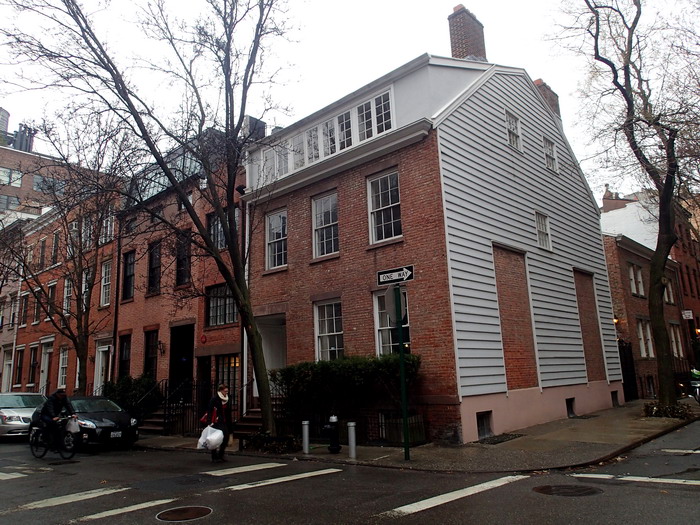
One of the most prestigious buildings in the area is the Jefferson Market Courthouse (425 Ave of Americas, around W10th Street) which was originally a courthouse but functions as a library today.
Nearby is Patchin Place (W10th Street, between Greenwich Ave and Ave of Americas), a small block of flats within a fenced yard. Originally it provided housing for the waiters of a nearby hotel, but the apartments became fashionable and several writers lived there, such as Eugene O’Neill and John Reed.
Going north on Hudson Street, we’ll find the Meatpacking District between 12th and Gansevoort Street which is literally and figuratively a “meat market”. In the olden days you could find butchers with their bloodied aprons; now you are more likely to see some playboys. Fashionable designers are opening stores in the up-and-coming area, and High Line opened here which is a park built on an old freight rail line elevated above the streets.
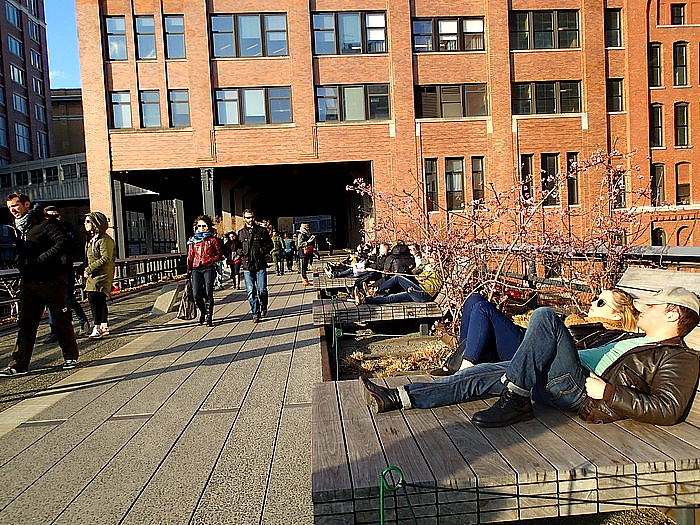
The brand new building of the Whitney Museum of American Art is located at the southern end of High Line and it houses the best American contemporary art.
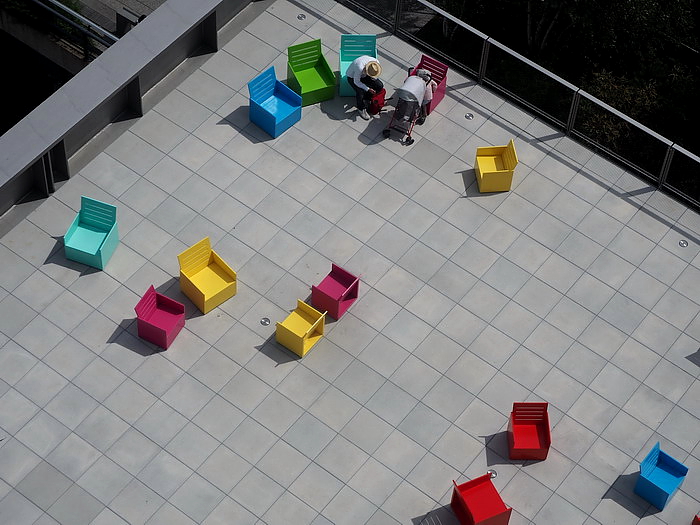
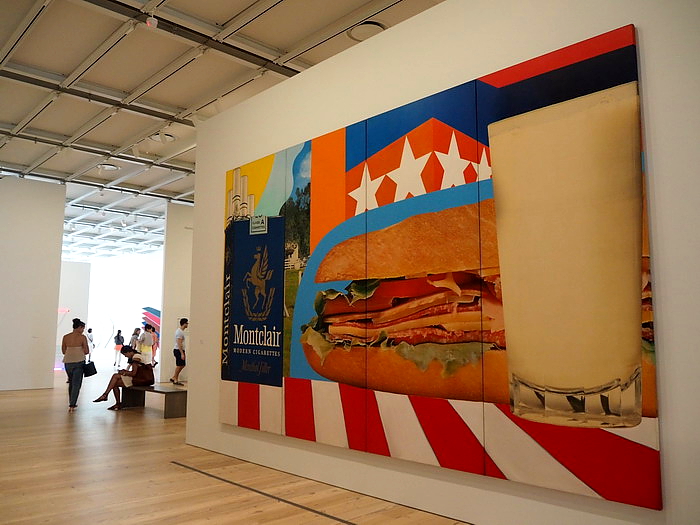
There is an excellent view towards the High Line from its terrace.
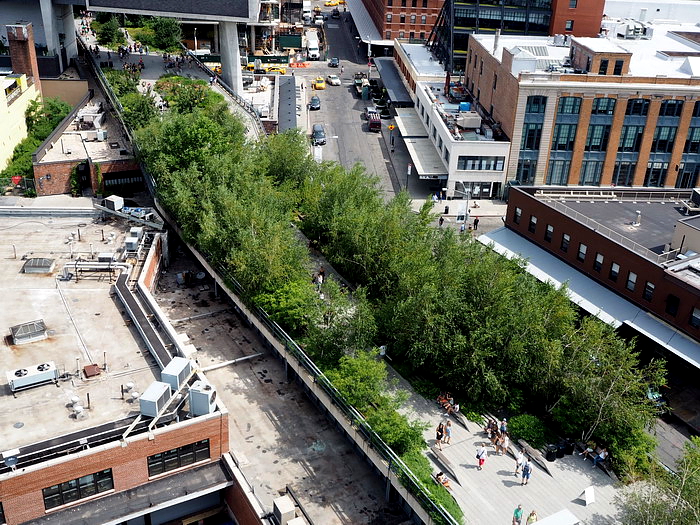
You can also find the Little Island nearby, the new, free park on Hudson River, which was opened to the public in May 2021.
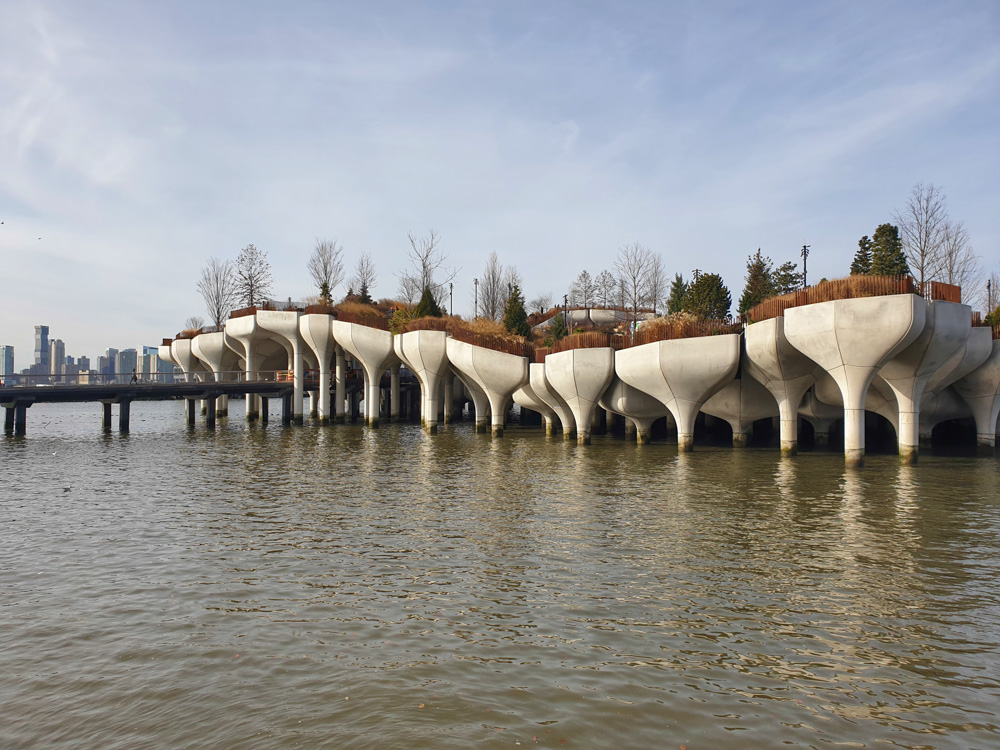
There is also an affordable Michelin starred restaurant in the area, The Spotted Pig at 314 W11th Street, near Hudson Street. Its fans are gushing over a dish called Smoked Haddock Chowder with House Made Crackers.

